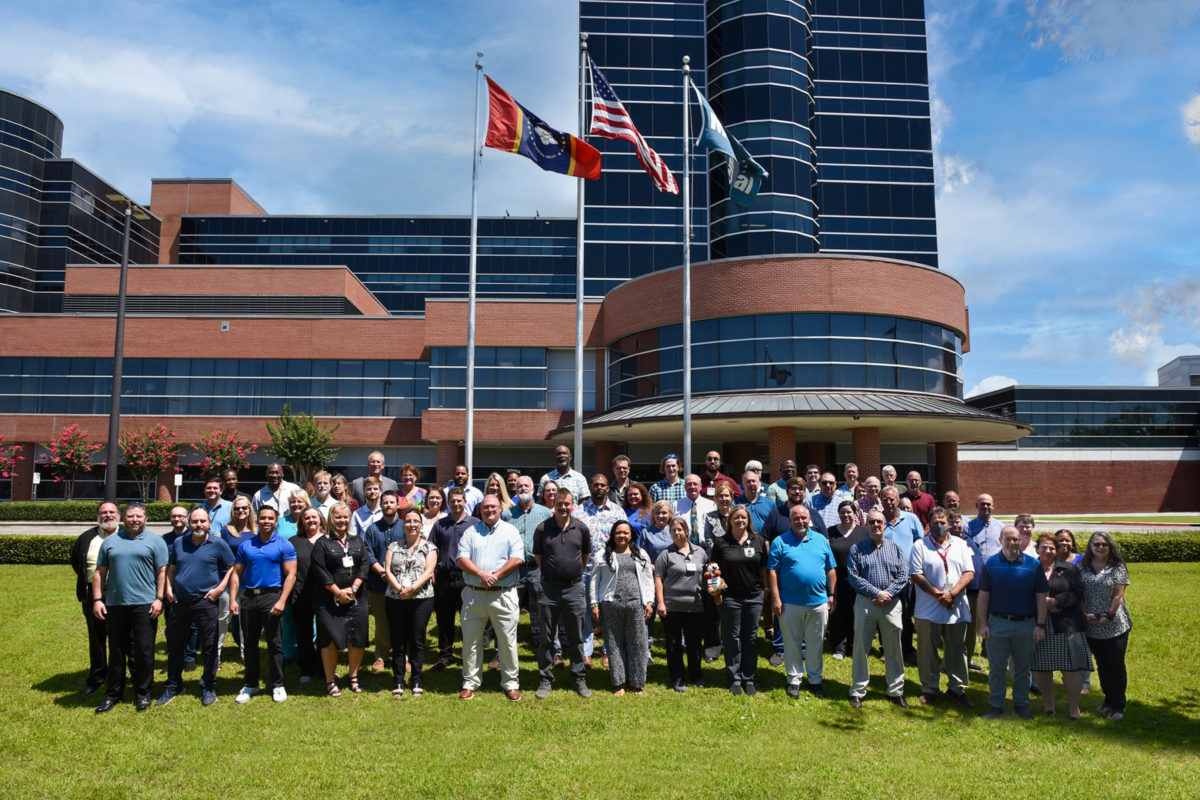We Are Health Care, We Are Memorial: Information Systems

Pictured above: Members of the IS team
Our “We Are Health Care” spotlights continue with Memorial’s hard-working Information Systems (IS) team! Learn more about how this integral group keeps our health system running from several members of the IS team.
What is Memorial’s IS team responsible for?
Memorial Project Manager Michelle Wade: “The purpose of the IS Department is to provide technological solutions for the diverse needs of Memorial Health System. Information Systems is committed to selecting, installing, implementing, and supporting systems designed to meet the health system’s financial, clinical, administrative, and telecommunication requirements. The department is also dedicated to providing a work environment for its employees based on professionalism, teamwork, respect and excellent customer service.
To explain what our IT Team is responsible for we should define healthcare information technology (IT). It is about communication between devices, between team members, between patients and their medical providers, and between separate medical facilities. With new and emerging technology transformations over recent years, we have implemented new technologies to respond to a changing regulatory environment and to improve the overall quality of care for patients.
We continue to think outside the box to develop new and innovative ways to provide quality patient care. Memorial is a place that deeply cares about its patients and we are all striving to provide the best care possible.”

There are several roles with IS that you might not be aware of:
- Desktop Support
- Infrastructure
- Network/Communications/Switchboard
- Operations
- Service Desk
- Provider Concierge
- Physicians Liaison
- Core/Integration
- Clinical Applications
- Application Analysts
- IT Security
- Data Team
- Biomed
What does an average day look like for the team?
Director of IS Technology Jeff Glocke: “Daily, we spend time updating our systems and providing support to our end users when requested via our ticketing system. We also work with other departments and executive leadership on many projects to discuss technology that can help with more productive workflows, etc. ”
What’s the most challenging part of the work you do?
Integration Architect Kimber Johnston: “For the Applications side of IS, the most challenging part of our job is planning and coordinating changes, upgrades and downtimes. These items are necessary to keep the systems running optimally, but negatively impacting our end users is never our desire, so we collaborate with different departments to minimize impact. These discussions consist of ironing out the details of the requested change or upgrade, testing thoroughly to ensure we do not encounter any unexpected issues, and then planning on a date to implement in the Production environment. The day of week and time of day are taken into consideration, especially when a downtime will come into play. It requires participation from multiple departments and points of view of many people to keep everything running smoothly.”
How does your job impact the patient experience?
Integration Architect Joe Lamkin: “One of the greatest benefits of information systems in healthcare is the impact on patient safety by reducing medication errors, reducing adverse drug reactions, and improving compliance to practice guidelines. There should be no doubt that health information technology is an important tool for improving healthcare quality and safety.
Most of us can recall going to the doctor and seeing him/her flip through pages and pages of the big 3-ring binder-chart looking for an x-ray result or lab result. Today, thanks to the collaboration of the clinical staff along with IS staff that process, as well as many others, are expedited at lightning speed with the click of a mouse.
Previously, providers had to visually look at all your medications, one by one, to check for interaction with a new medication being prescribed. Today, that is automatically done when the provider enters the new medication into your record. It compares the new drug to your allergies and all the medications on your medication list. Along with these safety measures, there are numerous pop-up alerts and messages that help the providers navigate to the best treatment plan for your specific diagnosis or problem.
Besides the impact on patient safety, the Information System staff also plays a role in making healthcare more convenient for our patients. Today, our patients can use a patient portal to send messages directly to their providers and the clinic staff. The patient can request a medication refill, schedule or cancel an appointment, or obtain past visit records and information. This drastically cuts down on time previously spent waiting on hold for an appointment or scheduling needs.
While we still have improvements to make, we have made great strides in lessening some of the obstacles for our patients when it comes to healthcare.”
How would you describe the IS team?
Memorial Project Manager Michelle Wade: “Our IT department is full of highly motivated, creative and intelligent individuals that work well as a team. Analysts and techs working with different applications and systems are always willing to share information and provide education. We recognize that the mission-critical IT team is still only part of a larger and more significant goal: the enablement of high-quality patient care. We go out of our way to provide the best service to the hospital and staff.”
Thank you for all that you do for our health system!
